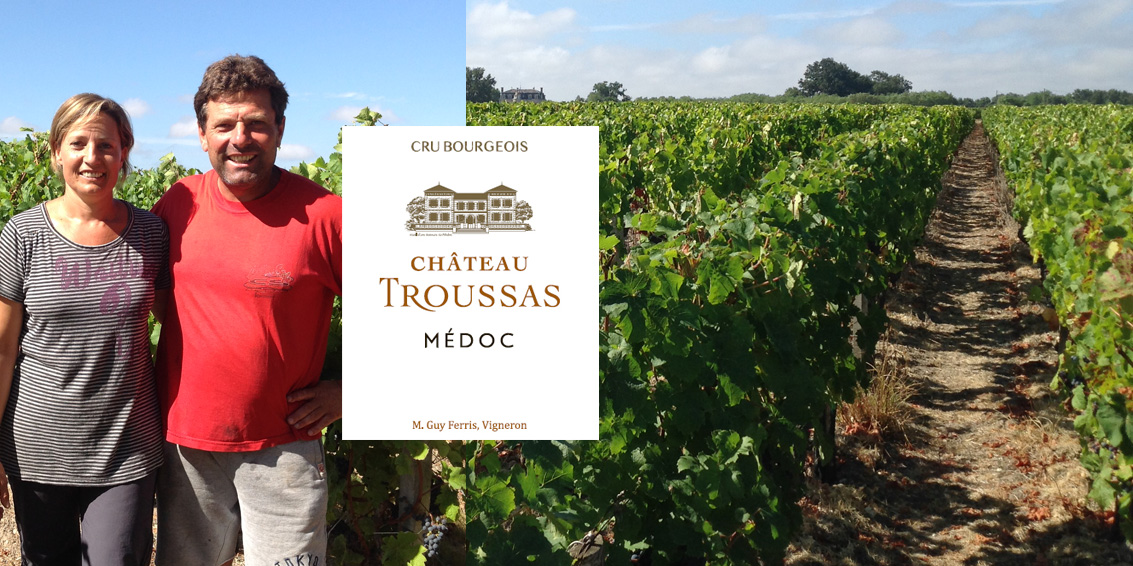
Portrait of
Marie-Laure and Gilles Ferris
Owner of ChâteauTroussas, Médoc Cru Bourgeois
It was in 1993 that Marie-Laure and Gilles Ferris arrived in Valeyrac, a village of 600 people situated between Soulac and Pauillac, on the banks of the Gironde estuary.
Their property, soon to be 13 hectares, has been built up over the years by buying up several plots, giving birth to a tailor-made vineyard with sandy-gravel and clay-limestone soils.
Gilles, tell me about your “cru bourgeois” property
Of our 13 ha of vines, 60% are Merlot, 30% Cabernet Sauvignon, 9% Cabernet France and 1% Petit Verdot. Château Troussas was part of the 1932 classification coordinated by the Bordeaux brokers, which listed 444 Crus Bourgeois under the authority of both the Bordeaux Chamber of Commerce and the Gironde Chamber of Agriculture. This list was used for more than 70 years as the reference for the commercial use of this category. Today, a committee assesses the quality of the châteaux according to several criteria, before validating or not their presence in the circle of Crus Bourgeois. After several years of absence, Château Troussas regained its status of CRU BOURGEOIS with the 2014 vintage.
What has been your career path?
The vine, it crosses the generations! While my great grandparents practised mixed farming including viticulture, my grandparents concentrated on the vines, with the know-how that I keep up today. After many years in the vineyards with my parents, I got professional qualifications with a BEP.
My parents progressively handed over their vineyards to me, then I extended the estate with the purchase of several plots. Château Troussas cru bourgeois has therefore been in the family for several generations. My parents continue to work on the estate during the pruning of the vines and trunk cleaning.
Your château is part of the Agri Confiance initiative; what improvements does this bring?
In the vines, we perform various manual operations to optimise the quality of our wine: secondary bud removal, leaf removal, trunk cleaning, bunch thinning. Like this, each berry is pampered on the vine. Then the grapes are sorted at the property before they start their second life at the cooperative. I follow the Agri Confiance environmental approach, which consists of responsible vineyard management. This is why I have developed planting with wide-spaced rows, to reduce the use of herbicides.
Finally, throughout the year our work in the vineyards depends on the weather forecasts, which guide our meticulous work in the vines every day. I consult specialist sites that can give the hourly forecast over 3 or 4 days. This is a precious tool when the weather turns out to be temperamental.
Why have you thrown yourself into the cooperative?
The cooperative is a precious tool for winegrowers who want to devote themselves to their vines. It is also a management tool that supports us in bringing our viticulture up to standard. I am on the board of the co-op, as part of the technical committee. Together we develop our methods to allow viticulture to progress.
A word about the 2016 harvest?
It will be late. We’ll start with the Merlot, then the Cabernets. We’ll finish with the Petit Verdot. The vintage seems promising, even if the yield risks being slightly lower than in other years, but this is offset by an estate that never stops expanding!



